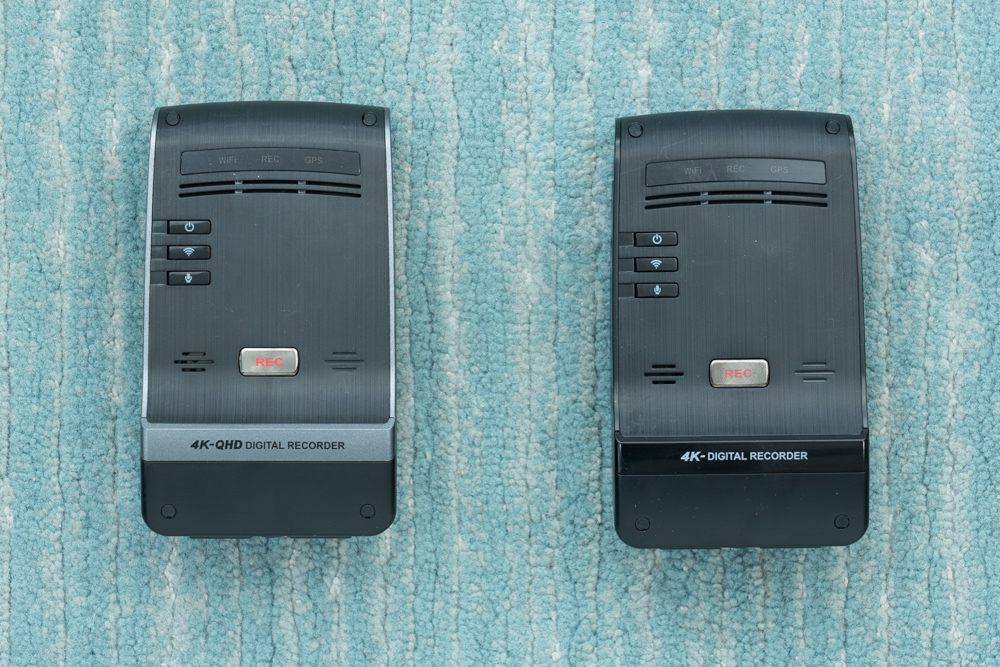Thinkware has released the U1000 Plus, the successor to their premium U1000 dashcam. I’ve been running the new U1000 Plus for the past 6 months, and it’s a pretty interesting update. On the surface, it looks almost identical to the original U1000, but there’s a lot of changes under the hood, some good, some not so good.
Let’s dive into what’s new, what’s improved, and where Thinkware actually took a step backwards.
Design and Build
Physically, the U1000 Plus looks very similar to the original U1000. Same compact body, but now with a stealthier black trim instead of the older silver accents. It’s a clean design that stays discreet on your windshield.

However, there’s one annoying change: because of the slightly curved lens, you can no longer attach a circular polarizer to cut out windshield reflections. That’s a loss for people who drive in bright, sunny conditions.
Video Quality
Front Camera
The U1000 Plus still records in 4K up front, but Thinkware downgraded the image sensor. Instead of using the Sony Starvis IMX334, the Plus uses the smaller Sony Starvis IMX515 sensor. In practice, this means:
- Daytime footage is still solid.
- Nighttime footage takes a noticeable hit, especially in low light situations.
HDR
Thinkware also added HDR support, which helps considerably with capturing license plates at night, especially when your bright headlights are shining directly on the reflective plate.
I do find that Viofo’s implementation of HDR is more effective. Furthermore, when driving at night, the smaller sensor just doesn’t gather as much light, so HDR is helpful, but it can’t fully compensate.
Rear Camera
The rear camera took an even bigger hit.
- Drops from 2K to 1080p resolution.
- Switches from a Sony Starvis sensor to a Silicon Optronics sensor.
- Night footage out back looks notably worse. Colors are duller, and clarity is a step back.
In short: if rear camera quality matters to you, the U1000 Plus is a downgrade compared to the original U1000.
You can find lots of sample footage in the full review video up top, or check out this compilation here:
New Features
Despite the image sensor downgrade, Thinkware did pack in a bunch of new features:
- HDR with Auto HDR: Turns HDR on automatically at night and off during the day
- Dewarping: Attempts to straighten out fisheye distortion (though improvements are pretty minimal)
- Bluetooth: Makes it much easier to connect to your phone without fiddling with Wi-Fi manually
- Multiplexer Support: Allows you to add more cameras (up to 5 total) with an add-on box
- Thinkware Connected Cloud: Their newer, improved cloud platform adds features like real-time vehicle tracking, remote live view, impact notifications, and emergency SOS messaging
- Support for Larger Memory Cards: Now up to 512GB
Parking Modes
Thinkware’s parking recording options are still some of the best in the industry, particularly the low power long term energy saving modes. One limitation of Energy Saving Mode is that the camera is asleep until an impact wakes it up, so you might miss what happened before the event. Adding Thinkware’s optional radar module helps mitigate this by waking the camera early if a vehicle approaches from the front.
Here are the various parking modes:
- Buffered motion and impact detection: Traditional parking mode
- Time-lapse recording: Video only, no audio
- Energy Saving Parking Mode: Puts the camera to sleep and only wakes it up if there’s an impact, dramatically extending battery life.
- Radar Module Support: Helps detect vehicles approaching while parked, giving you buffered recordings up front even in energy-saving mode.
- Smart Parking Mode: If the dashcam overheats, it automatically switches to low-power mode instead of just shutting off.
To power the U1000 Plus, you can either use the included cigarette lighter cable for basic driving recording, hardwire it directly into your fuse box for continuous parking mode, or make installation easier with Thinkware’s optional OBD-II cable. For even longer parking recording times, pairing the dashcam with Thinkware’s iVolt Mini or iVolt Xtra battery packs is also a great option.
Minor Details
- ADAS Alerts: Lane departure, front collision warnings, etc. I find them annoying and always disable them.
- Speed/Red Light Camera Alerts: Redundant if you already use apps like Waze or have a radar detector with GPS.
- Privacy Mode: Only saves footage if an event occurs. May be useful for certain drivers, but not for me.
Final Thoughts
The Thinkware U1000 Plus is a bit of a mixed bag. On one hand, it’s nice to see useful features like Bluetooth, HDR, and better cloud functionality. The new parking modes and multiplexer support are welcome additions too.
On the other hand, Thinkware made some serious compromises to bring the price down slightly — namely, worse image quality front and rear. For a premium 4K dashcam, that’s a pretty big deal.
If you prioritize new features and a slightly lower price over absolute video quality, the U1000 Plus could be a good choice over the original. But if pure video performance is your main priority, other dashcams would be a better pick.
Where to Buy
If you’re interested, here are links to the U1000 Plus and recommended accessories: